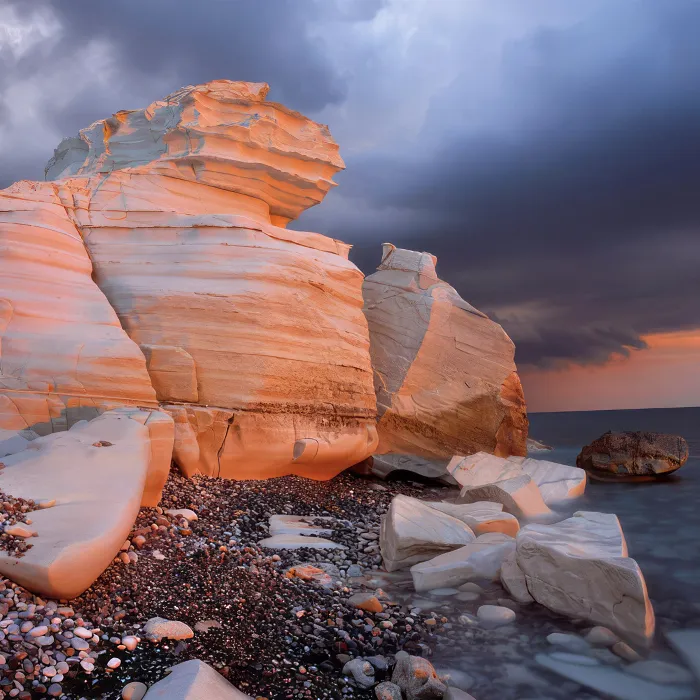The Buddhist New Year festival "Lhosar" is also celebrated enthusiastically every year in Leh. With a headlamp, fast lenses and a few ISO 400 films, I spent many hours stumbling through the cold night with these children. Thanks to many attempts and even more luck, a few expressive pictures were taken.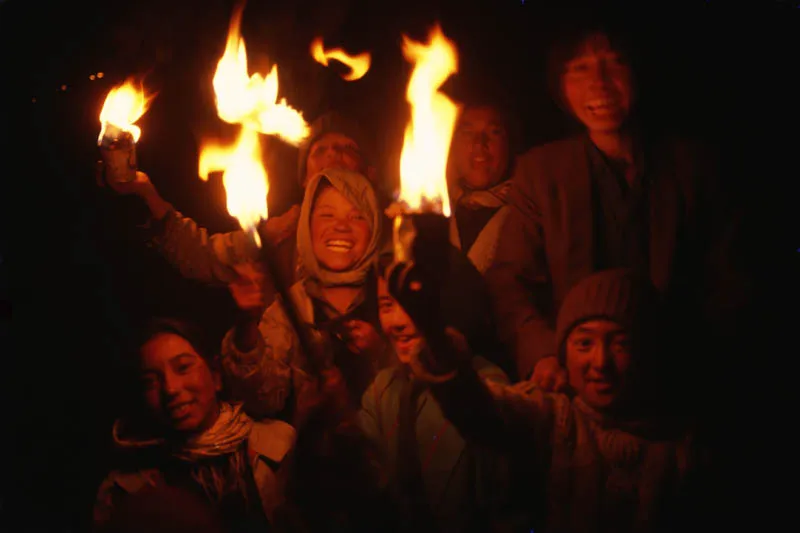
Canon F1N, FD f1.8 85 mm at Blender 1.8, 1/15 second, Fujichrom 100, Leh, Ladakh, India:
What is Available Light?
In photography, this term stands for a very specific, usually very atmospheric visual language. The literal translation "available light" does not do sufficient justice to the meaning. In my eyes, available light primarily stands for the world of reportage photography: spontaneous and authentic. It is the high school of expressive photography - with little light! It's impossible to imagine magazines like GEO or National Geographic without this style of photography.
The aim is usually to capture motifs in the soft light of dusk or in the dim light of a room in an unadulterated and atmospheric way. The naturalness of the situation should not be disturbed by a flash or additional continuous light. This means that available light photography is possible with little equipment! Even the use of a tripod is often impossible or disruptive in such situations. What's more, these are usually moving subjects with people.
Typical examples of this include theater and concert photography. In outdoor and mountain photography, this includes, for example, hut scenes, bivouac boxes, tent nights and generally all action and reportage scenes in low light, especially at dusk.
My personal "24" test image: On the one hand, the autofocus focused correctly on the people, on the other hand, of course, the background is slightly out of focus, as the depth of field expands only insignificantly at Blender 2. Although not beautiful, the slight vignetting in the corners at open aperture is normal for this type of lens.
This darkening (vignetting) can of course be easily removed during RAW conversion in Photoshop. Very positive: the very low noise. Canon EOS 5D Mark II, EF f1.4 24 mm L II at Blender 2 and ISO 1000, shutter speed 1/100 second. Snowshoers on the Dristkopf, Kitzbühel Alps, Tyrol, Austria.
The past
Until a few years ago, I improvised here with ISO 400 films and, if necessary, also exposed them at ISO 800 ("push"). Compared to ISO 100 film, I gained three shutter speeds (e.g. from 1/8 second to 1/60 second), but the quality of the correspondingly developed films was often disappointing. The resulting coarse grain was not always beautiful and some colors and the richness of detail in the image were sometimes lost. But those days are over (at least for most of us) ...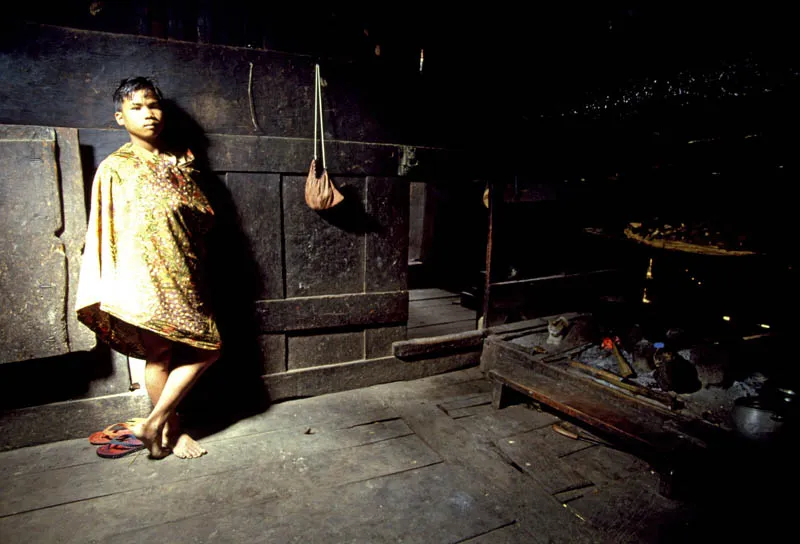
Canon F1N, FD f3.5 20-35 mm L at 20 mm and Blender 4, 1/30 second, Fujichrom 100 pushed to ISO 200, Mamasa, Sulawesi, Indonesia.
The analog past and an extreme lighting situation: very large differences in brightness, photographed on slide film. In my opinion, the slight yellow cast and the generally somewhat unnatural image impression was caused by pushing the film in combination with only mediocre development.
Technical problems - questions
What are the basic technical problems associated with available light photography? What questions does it raise?
- We often only have a shallow depth of field due to the use of open Blenders.
- Many lenses show unsightly edge blurring when the aperture is open.
- Shutter speeds become slower, increasing the risk of camera shake.
- Increased noise at high ISO values.
Not all problems prevent us from taking good pictures. Sometimes you can get further with improvisation than with technical perfectionism.
The fundamental question that needs to be answered is: How do I achieve sufficiently fast shutter speeds to avoid blurring a shot? All of the following answers therefore focus on hand-held photography. It is clear that in low light, motionless subjects can be photographed with a tripod without blurring and with sufficient depth of field, and this has already been described in various tutorials.
Available light - but with a tripod, which is easy to see from the "flowing" water.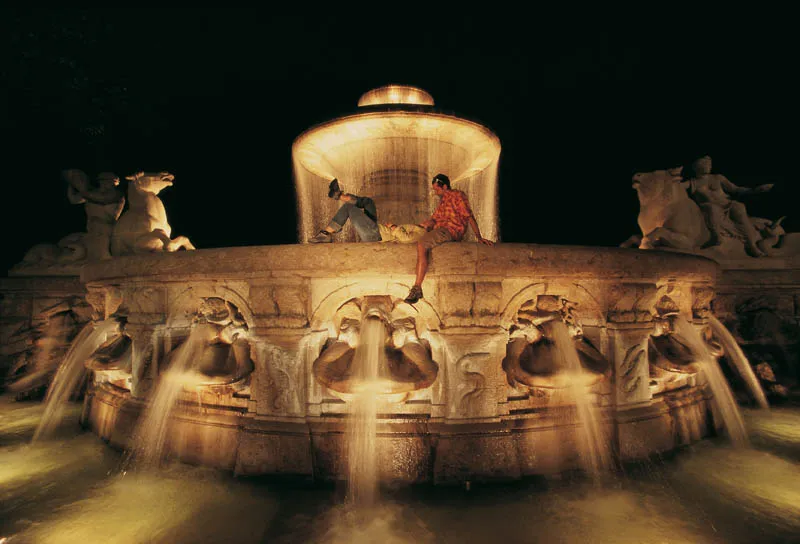
However, the slow shutter speed can only be achieved if the two people are sitting extremely still, i.e. motionless, by agreement and on command. Canon EOS 1V, EF f2.8 16-35 mm L at Blender 4, 2 seconds, Fuji Velvia 100 pushed to ISO 200, Munich, Germany.
Fast lenses - luxury or necessity?
The answer to this question is relatively clear: with a fast lens you have significantly more possibilities in low light. You can take pictures that would be technically impossible with a low-light lens and at the same time have more creative options. Fast fixed focal lengths are both a luxury and a necessity, but this luxury does not have to be unaffordable.
An example: The standard f1.4 50 mm lens from most manufacturers is of very good quality and costs "only" between 200 and 400 euros when new. On the second-hand market, they can be had for as little as 100 euros in good condition.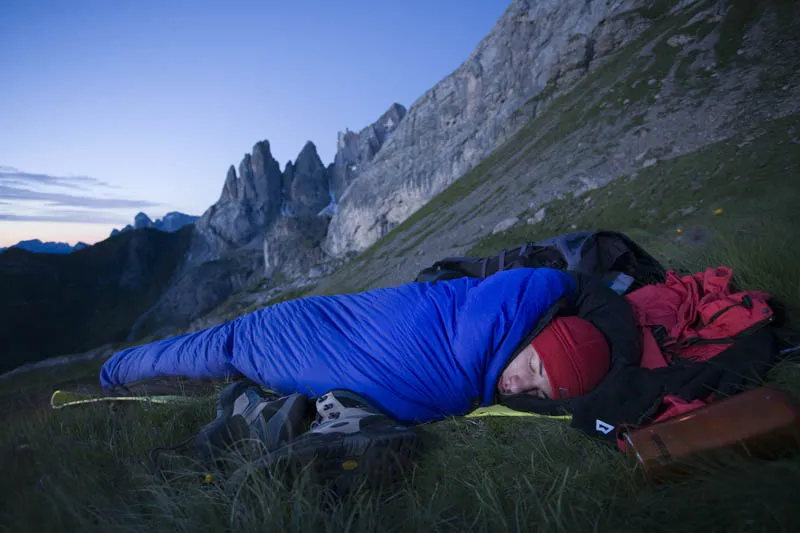
Summer bivouacs are like vacations: balmy nights, warm fingers and "shake-free" photography. Canon EOS 5D, EF f4.0 17-40 mm L at Blender 4, 1/15 second, ISO 800. Cima Venegiota, Pala, Dolomites, Italy.
What are the benefits of the stabilizer?
It doesn't allow us to use faster shutter speeds, but it does let us use "slower" shutter speeds, up to 1/30 of a second with telephoto lenses, without blurring the image. Conclusion: It is very helpful, especially with telephoto lenses, and allows us to compose images in a more controlled way thanks to the steadier viewfinder image.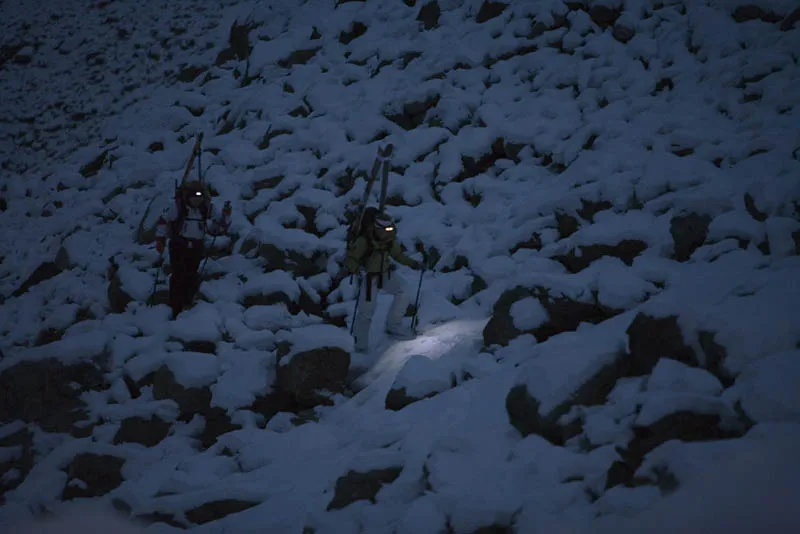
Two ski tourers in the solitude of the Lyngen Alps in northern Norway. The picture was taken at around 1 p.m. during the polar night twilight.
Very important: the spot of the headlamp! Without the stabilizer, this picture would have been impossible to take freehand. Unfortunately, I (in my ignorance at the time) underexposed all these pictures too much; the noise is already disturbingly visible. Canon EOS 5D, EF f2.8 70-200 mm L IS at Blender 2.8, ISO 400 and 1/25 second. Goalborri, Lyngen Alps, Norway.
What about the quality?
The speed, indicated by the maximum aperture value, e.g. f1.4 for a 50 mm lens, is an essential characteristic of a lens. In analog times, high-speed lenses were generally also the highest quality lenses. Digitally, this tendency no longer applies. The resolution requirements of a lens on a digital camera with a full-frame sensor are significantly higher.
With smaller sensors, this has a less dramatic effect, as the fringes, which tend to be weak, are cut off. "Old" lenses such as the f1.8 28 mm or the f1.4 24 mm from Canon are only mediocre in terms of quality. At open aperture, they are not only blurred at the edges (this has nothing to do with a lack of depth of field!!), but also dull. They lack brilliance and contrast. Only when stopped down to f5.6 do they achieve a reasonably acceptable level of quality.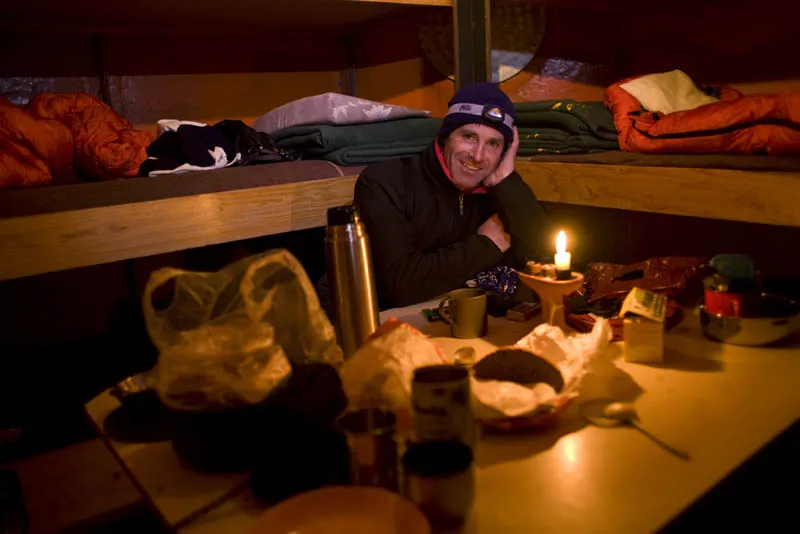
When it storms and snows outside, a simple bivouac box becomes a palace. I had taken an f1.8 28 mm lens with me on this tour especially for the indoor shots.
Despite some unsightly blurring around the edges, I was grateful to have been able to take pictures with a rustic hut atmosphere. Canon EOS 5D, EF f1.8 28 mm at Blender 2 and ISO 800, shutter speed 1/8 second. Rhineland-Palatinate bivouac, Ötztal Alps, Tyrol, Austria.
The normal f1.4 50 mm lenses from Canon, Nikon and Zeiss, for example, are very good, even with an open aperture.
Really good (but unfortunately also expensive) are some of the new (digital) lens bills such as the f1.4 24 mm L II from Canon; it is already very decent even at open Blender and is really sensationally good stopped down. Together with the f1.4 50 mm and the f1.8 85 mm, it forms my "available light lens base".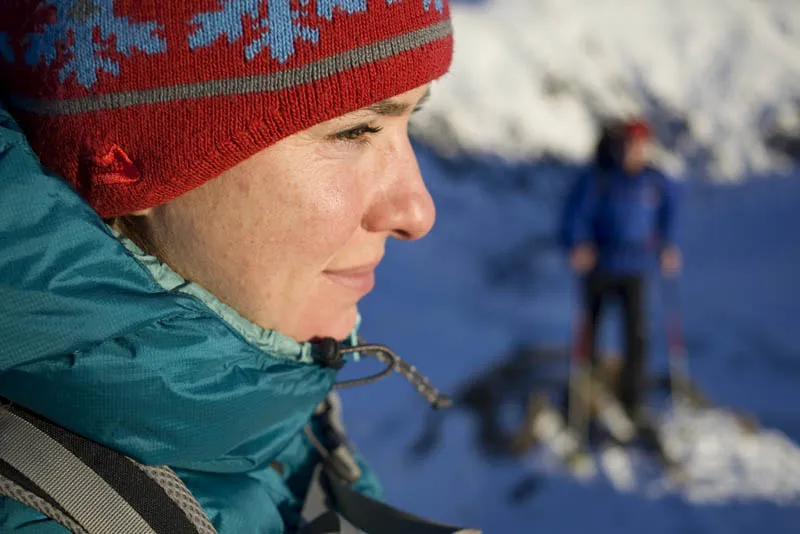
Although this shot was not taken in "low light", it shows quite clearly how shallow the depth of field is with an open Blender, especially when the focal plane is clearly in the foreground. It also shows how a blurred background can hint at important content.
Canon EOS 5D Mark II, EF f1.4 50mm and Blender 2.8, ISO 100, shutter speed 1/500 second. Snowshoers on the Dristkopf, Kitzbühel Alps, Tyrol, Austria.
Due to the heavy climbing equipment for a high western alpine peak, I had to make extreme savings on camera equipment on this tour. Accordingly, the photography was improvised in low light. I put the headlamp on a shelf to brighten up the large thermos flask.
Well supported, I managed a single, sharp, non-blurred shot after many releases at only 1/4 second. Canon EOS 5 D, EF f4 17-40 mm L at Blender 4 and ISO 640, shutter speed 1/4 second. Rifugio Vittorio Sella, Gran Paradiso National Park, Italy.
What is the benefit of high light intensity?
A practical example: I photographed the hut scene in the Rifugio Vittorio Sella freehand, i.e. without a tripod, with the Canon EF f4 17-40 mm L at Blender 4.0, ISO 640 and 1/4 second. I had to release the shutter about 15 times before I managed to get a sharp, blur-free shot. With the f1.4 50 mm lens, I would have had 1/30 second instead of 1/4 second, so the probability of sharp photos would have been much higher. The ratio would probably have been reversed and only one in 15 shots would have been blurred. This would have given me a large selection of sharp images to choose from in terms of the mountaineer's gaze, composition, etc.
"If only I had", "if only and but" ... The fact is that I sometimes can't carry the heavy, fast fixed focal lengths on long tours. "If only I were stronger, younger, more capable of suffering...".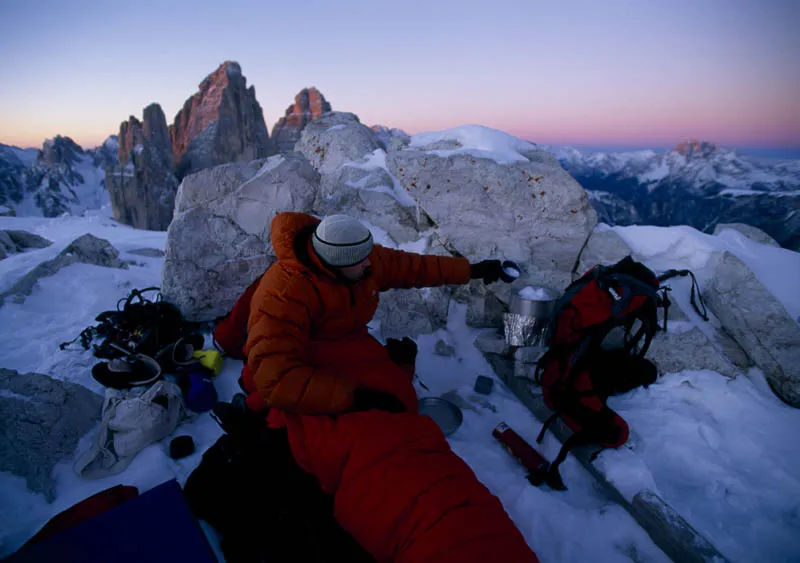
Minus 25 degrees and icy winds - a photographer shouldn't shiver. The first morning light is just reaching the summits of the Three Peaks.
Canon EOS 1V, EF f2.8 16-35 mm L at Blender 4, 1/8 second, Fuji Provia 400 pushed to ISO 800. Paternkofel, Dolomites, Italy.
Playing with the creative blur
The high speed results in a shallow depth of field at open aperture, even at wide-angle focal lengths. Used correctly, even with a wide-angle lens, we can control the sharpness very selectively and blur the unimportant in the blur, or suggest the essential in the blur! Important here: the shorter the focal length (wide angle), the closer the subject should be in order to increase the blur "towards the back".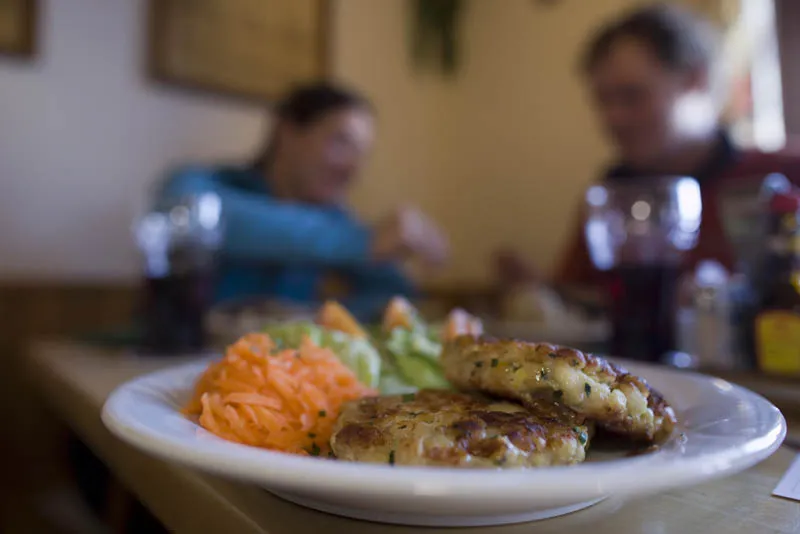
Guest room of the Bamberger Hütte, Kitzbühel Alps, Tyrol, Austria.
Due to the short shooting distance and Blender 2, the depth of field "on our lunch" is only minimal. At the same time, the background is rendered very softly (despite the wide-angle lens). Canon EOS 5D Mark II, EF f1.4 24 mm L II at Blender 2 and ISO 320, shutter speed 1/60 second.
This image corresponds to my idea of available light. Without the fast fixed focal length in combination with the very good ISO 1600 of the new 5D, this shot would have been impossible.
Canon EOS 5D Mark II, EF f1.4 24 mm L II at Blender 1.8 and ISO 1600, shutter speed 1/30 second.Snow cave on the Goisele, Schober group, East Tyrol, Austria.
The same scene "dead-flashed".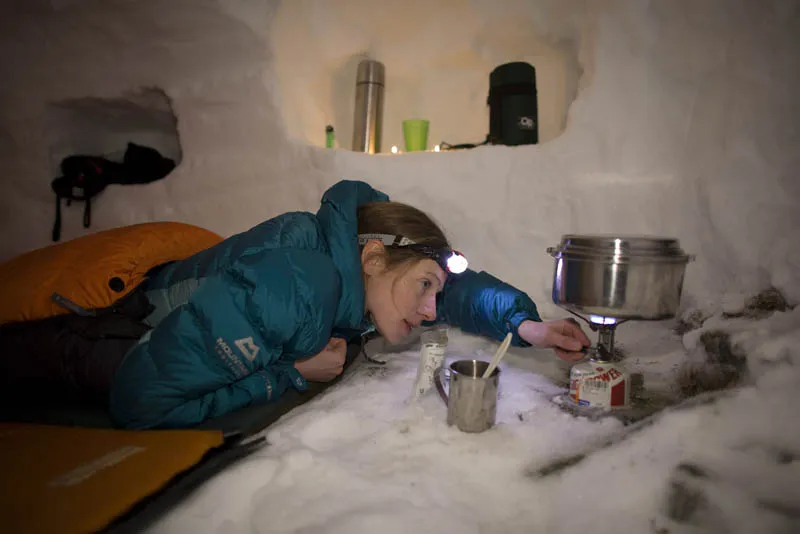
Canon EOS 5D Mark II, EF f1.4 24 mm L II at Blender 1.8 and ISO 1600, shutter speed 1/30 second, flash. Snow cave on the Goisele, Schober group, East Tyrol, Austria.
The new ISO limit range With regard to the ISO possibilities of the latest generation of cameras, I could jump for joy every day. Many available light shots of the past few months would not have been possible with analog cameras. Nikon's D3 and D700 in particular, but also the EOS 50D and 5D Mark II from Canon, have set new standards here. Very good results are now possible up to ISO 1600, and still printable up to ISO 3200. This means that for photography in low light, we have two to three shutter speeds (Blenders) more at our disposal with comparable quality (to analog). Even inexpensive entry-level cameras produce very good results up to ISO 800/1600.
The most important tip: Use the high ISO ranges and experiment with your own camera. The metadata of the images allows us to make direct comparisons without always having to write down all the data for comparison purposes (as was previously the case).
But here again the advice: Please do not underexpose!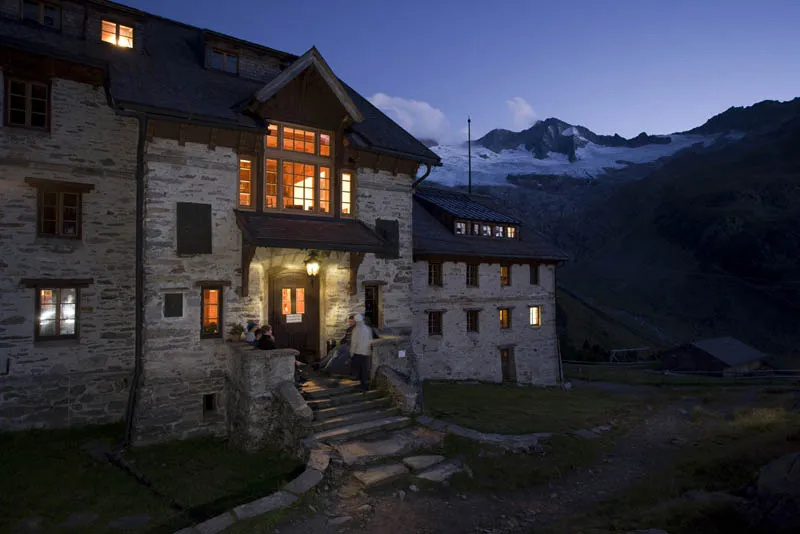
For this shot of the Berliner Hütte at dusk, everyone had to keep still: the photographer and the hikers in front of the hut.
Canon EOS 1Ds Mark III, EF f4 17-40 mm L at Blender 5.6 and ISO 800, shutter speed 1/15 second. Berliner Hütte, Zillertal Alps, Tyrol, Austria.
This shot was only possible without a stabilizer and tripod by placing the camera on a tree trunk. Normally, 1/60 second is much too long for the extreme telephoto focal length.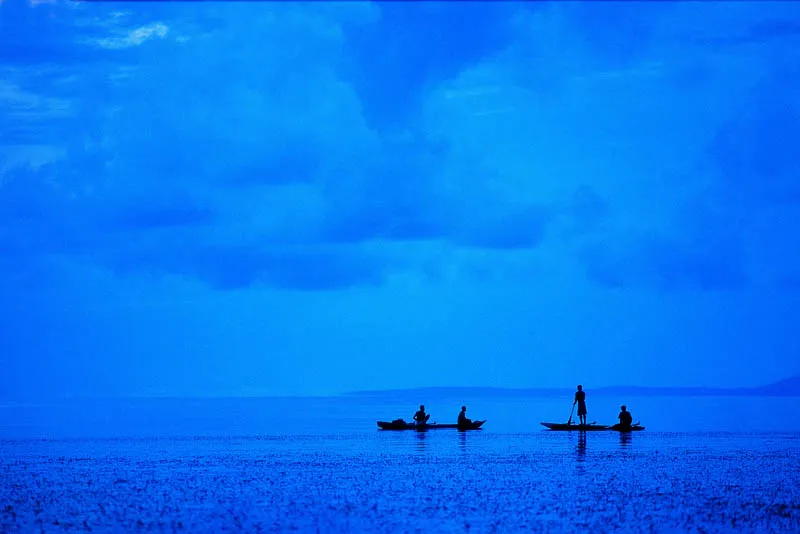
Canon F1N, FD f5.6 400 mm L, Blender 5.6, 1/60 second, Fuji Sensia 100, pushed to ISO 200, Pai Island, Irian Jaya, Indonesia.
Strength lies in tranquillity
It should actually be said: With a steady hand we can take good pictures. The slowest shutter speeds with/without a stabilizer that can still be "held" by hand have already been discussed in Tutorial 2. I would like to add the following: The wider the wide-angle lens, the slower the shutter speed can be. With the f1.4 24 mm L II, I can easily hold it handheld for 1/4 second. However, the longer the telephoto lens, the faster the shutter speed must be, e.g. 1/200 second at 200 mm focal length.
What else can we do, apart from increasing the ISO number, using faster lenses and stabilizers, to minimize the risk of camera shake? Quite simply: hold the camera steady. But how? Firstly, correct breathing helps: you should allow your breathing to calm down briefly, especially after exertion.
This means: take several deep breaths in and out, hold your breath at the end and only then release the shutter. If you have to stand upright for any reason, the position of the shooters/biathletes helps: place the back foot across, front foot in the direction of the photo, both elbows resting on the chest. All variations of leaning, such as with the shoulder or back against a wall, also have a stabilizing effect. It becomes even more stable when we are sitting or even lying down and can therefore support our elbows on the table, knees or floor. With every "axis" that is placed on top and thus stabilized, we reduce the risk of camera shake.
It is worth practicing and experimenting in the "available light world". This not only produces particularly atmospheric images, but also shots that you don't take every day.
And the basic rule is: "There's no such thing as can't"!
Have fun.
These clouds in the morning sky were only softly illuminated for a few minutes. With modern, stabilized lenses and high ISO values, images of this kind have become much easier.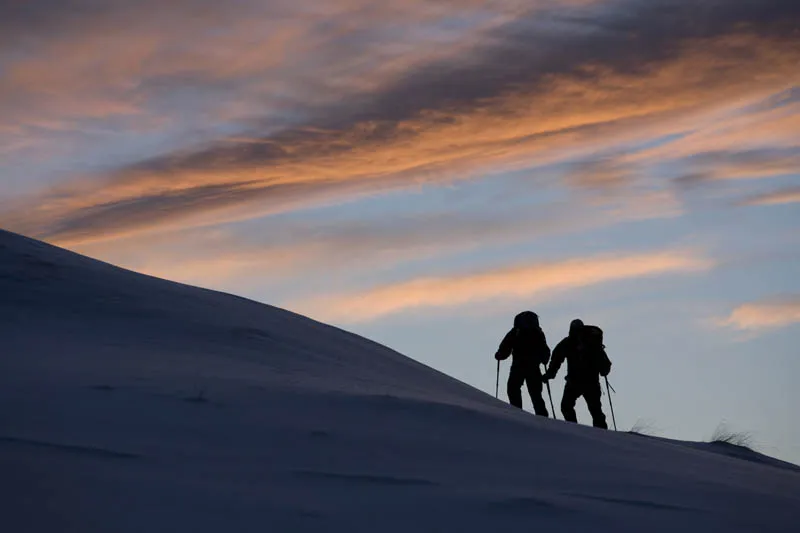
Canon EOS 1Ds Mark III, EF f2.8 70-200 mm L IS at Blender 4, ISO 400 and 1/100 second. Rauhenkopf, Zillertal Alps, Austria.
